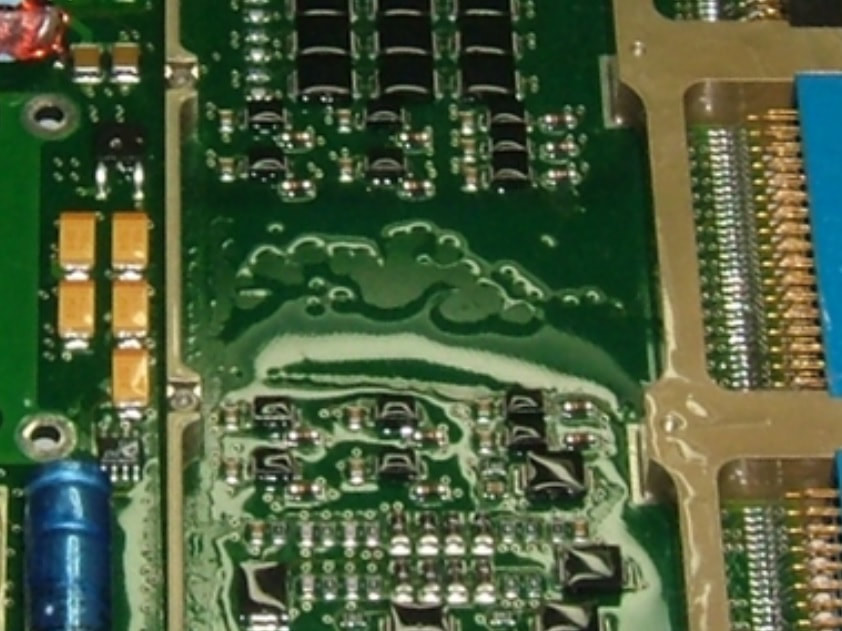Dewetting in conformal coating refers to the phenomenon where the coating pulls away or contracts, leaving behind areas without coverage. This issue can compromise the protective properties of the coating, leaving exposed regions of the electronic components. Here are some common reasons for dewetting in conformal coating and potential solutions:
- Contamination:
- Contaminants on the substrate or the conformal coating material can cause dewetting. Ensure that the substrate is clean and free from any residues, oils, or contaminants before applying the coating.
- Incompatible Substrate or Coating Material:
- Some substrates may not be compatible with certain conformal coating materials, leading to dewetting. Ensure compatibility between the substrate and the chosen coating material. Check with the coating material manufacturer for recommendations.
- Surface Energy Mismatch:
- Dewetting can occur if there is a significant difference in surface energy between the substrate and the conformal coating. Use surface treatments or primers to improve adhesion and reduce surface tension differences.
- Improper Surface Preparation:
- Inadequate surface preparation, such as insufficient cleaning or rough surfaces, can lead to dewetting. Follow proper surface preparation procedures, including cleaning and, if necessary, using adhesion promoters.
- Incorrect Coating Thickness:
- Applying the conformal coating too thickly may result in dewetting. Follow the manufacturer's guidelines regarding the recommended coating thickness. Adjust the application parameters to achieve the desired thickness.
- Temperature and Humidity Conditions:
- The environmental conditions during the coating process, such as temperature and humidity, can impact dewetting. Ensure that the conditions are within the recommended range for the specific conformal coating material.
- Drying and Curing Issues:
- Dewetting can occur if the coating material dries too quickly or if the curing process is not optimal. Adjust the drying and curing parameters based on the specifications provided by the coating material manufacturer.
- Application Technique:
- The method of application, such as spraying, brushing, or dipping, can influence dewetting. Experiment with different application techniques to find the one that minimizes dewetting.
- Contaminated Equipment:
- Ensure that the application equipment, such as spray nozzles or brushes, is clean and free from contaminants that could be transferred to the coating.
If dewetting has already occurred, rework may be necessary. This could involve removing the existing coating, addressing the root cause of the issue, and reapplying the conformal coating using proper procedures. Always consult the conformal coating material manufacturer's guidelines for specific recommendations based on the material used.

